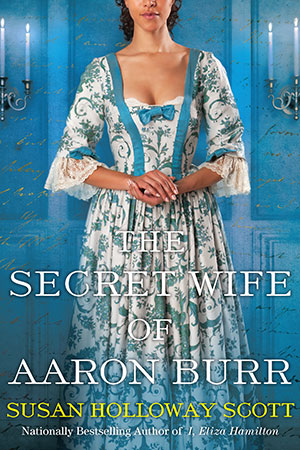Isabella reporting,
Clues to life in the past can turn up in unexpected places. Discovering the interiors of long-ago shops for our characters to visit has always been a particular challenge for Loretta and me. While there are prints and a few paintings that show shop interiors, descriptions can be maddeningly vague. Just as today, shops were so ordinary and commonplace that few people sat down and described them in detail in letters or diaries. When was the last time you documented your local Target for posterity?
All of which is why I found this little (only about six inches high) porcelain so delightful. According to the sign on the front, it shows a
marchand de mode, or fashion merchant, complete with a well-dressed shopkeeper ready to serve his customers. I'm not quite sure if the woman represents a customer, or a shop assistant; while the man is firmly behind the counter, her body ends vaguely right on top of it.
The diversity of the goods on the shelves makes me think this is something of a milliner's shop - that is, by the 18thc definition, it contains a variety of small, fashionable goods instead of just hats. There
are hats, hanging on the wall, but there are also handkerchiefs and bolts and bolts of fabric, in prints and stripes, checks and solids. I think I can also make out cloaks, or perhaps they're some sort of fancy-dress dominos in the upper left.
Then there are items that I'll have to guess as to their purpose. The cone-shaped items with the red
decoration may be the shields that people held up to protect their faces while their hair was powdered, but then again, they could be folding fans. On the right wall appears to be a display of black silk bows with false curls or queues. I'm also not certain about the black crosses on ribbons, either; are they necklaces, or rosaries, or something else altogether? I know our readers are a well-informed bunch, so if you know better than I, please let me know!
This little shop was made in the Ludwigsburg Porcelain Manufactory, c1765. Apparently the shop was part of a much more elaborate market scene, composed of numerous porcelain shops and figures, and commissioned by Charles Eugene, Duke of Wüttemberg (1728-1793). Apparently the set was inspired by the Duke's visit to Venice, and was used as a table centerpiece for banquets.
Hmm, a formal banquet with an entire Venice street-scene in porcelain strung along the table beneath the candelabra - that sounds like it belongs in a story, too, doesn't it?
Above: Venetian fair shop with two figures, Ludwigsburg Porcelain Manufactory, 1765, Metropolitan Museum of Art.

















































 One of us --
One of us -- 


